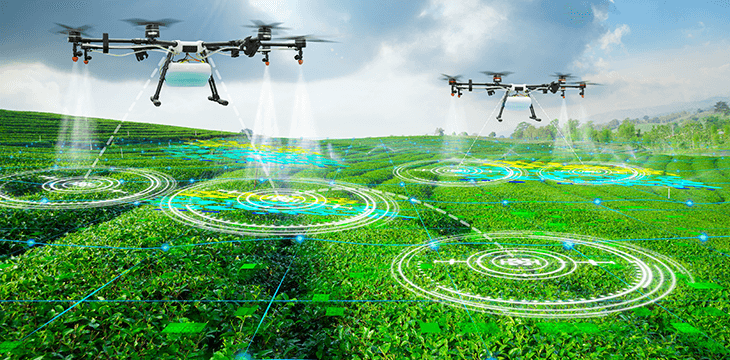As water scarcity and climate variability intensify, efficient irrigation is becoming more critical than ever in modern agriculture. Where farmers once relied on intuition or rigid schedules, smart automation—powered by the Internet of Things (IoT)—is enabling a new era of precision farming. The result: optimized water usage, better crop yields, reduced costs, and more sustainable practices.
What Is Smart Irrigation?
Smart irrigation uses interconnected IoT devices such as soil moisture sensors, weather stations, and automated control systems to monitor environmental conditions and manage water use in real time.
Soil sensors detect exact moisture levels at various depths, while weather data forecasts inform irrigation timing. Central control units—often enhanced by artificial intelligence—automatically determine when and how much to irrigate. The systems are activated remotely via mobile apps, cloud platforms, or connected valves, ensuring crops receive just the right amount of water.
This shift from guesswork to data-driven precision helps farmers conserve water and improve productivity.
How It Works on the Ground
- Sensor Installation
Soil and temperature sensors are deployed in strategic field locations. They transmit continuous data to a central system—either cloud-based or locally hosted. - Weather Integration
The system incorporates weather forecasts and historical climate patterns to anticipate rainfall or heat spikes, adjusting irrigation schedules accordingly. - Intelligent Control Logic
Custom rules are set—e.g., irrigate only when soil moisture drops below 25% and no rain is expected within 24 hours. AI systems further refine these rules over time. - Automated Irrigation
Sprinkler, drip, or pivot systems operate automatically based on commands from the control unit—without human intervention. - Real-Time Monitoring
Farmers receive alerts and status updates on their phones or dashboards. Historical data is stored for analysis, compliance, or sustainability certifications.
Case Study: Synox Smart Irrigation in Action
French IoT provider Synox has demonstrated tangible benefits through its smart irrigation solutions. By using real-time data from weather stations and soil sensors, Synox systems deliver water with pinpoint precision, reducing not only water usage but also energy consumption from pumping.
On farms averaging 40 acres, the technology has led to measurable water savings and improved irrigation efficiency within just two years—validating the initial investment and highlighting scalability for broader adoption.
Benefits for Farmers, Consumers, and the Planet
For Farmers
- Water Conservation: Significantly reduces overwatering and runoff.
- Operational Efficiency: Automates time-consuming irrigation tasks.
- Higher Yields: Optimized soil moisture promotes healthier crops.
- Energy Savings: Schedules avoid peak electricity times, cutting power bills.
For Consumers
- Food Security: Stable production supports consistent supply.
- Traceability: Sensor data improves transparency in food production systems.
For the Environment
- Sustainable Water Use: Smart irrigation contributes to better water resource management.
- Lower Carbon Emissions: Efficient systems use less energy.
- Healthier Soil: Avoiding drought and waterlogging maintains biodiversity and soil structure.
Challenges to Overcome
While the benefits are compelling, there are barriers to adoption:
- High Initial Costs: Advanced sensors and IoT infrastructure require upfront investment.
- Technical Skills: Farmers need training to interpret data and adjust systems.
- Connectivity Limitations: Remote areas may lack stable 4G or Wi-Fi, though low-power wide-area networks (LPWAN) are helping bridge the gap.
What’s Next: The Future of Smart Irrigation
The technology continues to evolve rapidly:
- AI-Driven Insights: Machine learning enhances decision-making by analyzing soil types, crop needs, and long-term weather patterns.
- Drone Integration: UAVs equipped with sensors can detect irrigation issues and feed data back into smart systems.
- Edge-Cloud Collaboration: Local (edge) computing enables rapid responses, while cloud systems provide deeper analysis.
- Integrated Farm Management: Smart irrigation is being connected with fertilization, pest control, and harvest planning—forming part of a unified, intelligent farm system.
From Pilot to Practice
Many farmers see a return on investment within 18–24 months, especially in water-stressed regions. As IoT costs fall and carbon credit markets expand, even smaller farms are beginning to adopt these technologies.
Conclusion: Growing More with Less
Smart irrigation is reshaping the way we manage one of agriculture’s most precious resources. Despite some initial hurdles, the long-term rewards—resource conservation, yield improvements, and climate resilience—make automation a smart and necessary step forward.
As innovation continues, smart irrigation is set to become not just a best practice, but a global agricultural standard.


